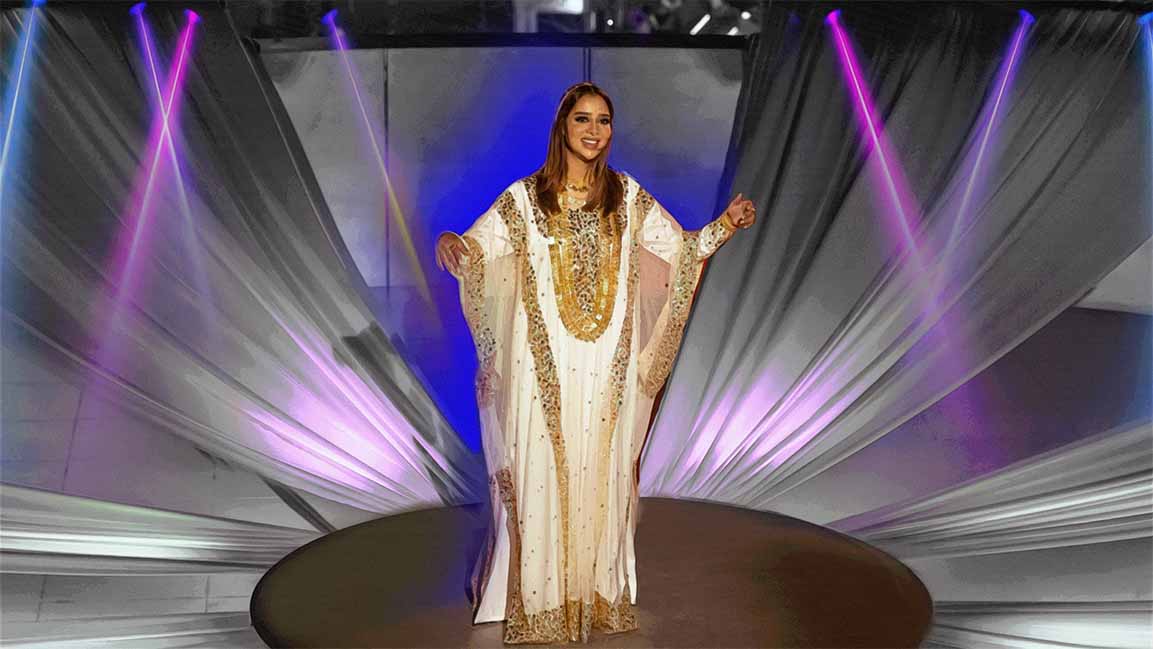- | 9:00 am
Can the Middle East produce the next global popstar?
The Middle East's music industry has evolved, but the current generation of Arab youth could be the ones to take it to the next level on the global stage.

The Middle East is a breeding ground for talented musicians and artists. While well-known pop stars like Amr Diab, Nancy Ajram, Mohammed Assaf, among others, have captivated audiences and garnered attention, we are yet to have a global popstar.
“There have been artists who have achieved international recognition and success, but we need more regional artists to join the ranks,” says Sasha El Jurdi, Head of Content Programming at TikTok MENA.
Rising stars, such as Palestinian-Chilean singer Elyanna, have made impressive strides in the music industry. Elyanna was the first to deliver a complete performance in Arabic at Coachella. Similarly, Nancy Ajram’s collaboration with American DJ Marshmello on the track Sah Sah became the first Arabic song to enter the US Billboard Dance Charts in 2022. These developments highlight artists’ growing influence in the global music scene.
According to the IFPI Global Music Report of 2021, the MENA region is the fastest-growing music market globally, with a growth rate of 35%.
Eddy Maroun, Co-founder and CEO of Anghami, points out that these accomplishments have prompted record labels to boost their investments in the region and explore the market’s vast potential.
“Historically, all we’ve seen were office representative for those global labels, but they weren’t very active. For example, Universal represented Warner and didn’t have an office here. When the market started to grow and more music streaming platforms opened, the attention of those global labels grew and they started to invest,” he adds.
Hady Hajjar, Co-founder and Managing Director of HuManagement, highlights the substantial Arabic diaspora eagerly seeking global music experiences. But achieving this requires the right foundation, a balanced blend of music and lyrics tailored to the artist’s style.
BREAKING BARRIERS
The idea of a global Arab pop star is within reach, considering the global success of niche music like K-pop (BTS are currently the world’s biggest boyband). However, according to experts, the Arab music industry must overcome several barriers to realize this vision.
Language is a significant barrier to the global reach of Arab pop stars, as most of them primarily sing in Arabic.
“English in Western culture is broader and bigger. That’s why artists who mainly sing in English, who are based in the West, have a bigger influence because they already are reaching a much bigger audience. The audience understands what they’re singing about,” says Maroun.
The Middle East’s music industry is still emerging, with a relatively smaller market. Another challenge is the region’s diverse populations, with each country having distinct traditions and cultures that influence the music scene.
“Even though the Middle East is considered one part of the world, there are many groups and subgroups of music, making it harder to grow bigger. In the beginning, we need to succeed locally, regionally, then go global,” Hajjar adds.
Also, Arab pop stars who have achieved regional success may not see the need for a global career. According to experts, those aspiring to global recognition often need better stature to make that leap.
“Focusing on community building and growing a dedicated fanbase is crucial. This can be achieved by engaging with fans on social media, organizing local and international concerts, and building a loyal following that can help create buzz and demand for their music,” El Jurdi says.
Additionally, the music industry requires more investment, both in terms of time and finances. Maroun emphasizes that music is 50% art and 50% marketing, and increased investments are crucial.
PROVIDING THE PLATFORM
Data from Spotify shows the phenomenal growth of music from the MENA region. Genres have surged by 170% from 2019 to 2022, and there’s been an almost 40% annual rise in global streams of MENA artists from 2019 to 2022.
Mark Abou Jaoude, Head of Music for the Middle East and North Africa at Spotify, says, “This appetite for diverse self-expression is now echoed in the Arab music scene. We’re seeing more cross-border collaborations among artists, which creates this unique audio tapestry. More artists are singing in Arabic and other languages, and we’re seeing more diaspora artists turning their attention back to their home culture.”
With Sony Music Middle East, Anghami launched Vibe Music Arabia to give local artists a push and give them easier access to global sources. The platform also developed Anagami Studios, allowing brands to invest in music.
“Usually, these movements come from the up-and-coming artists who can be molded and influenced by the Western culture. We first put Arabic and international music together on one platform, which helped a lot. We helped artists experiment more with their art,” says Maroun, citing the example of the Nancy Ajram and Marshmello collaboration, pre-released on Anghami.
HuManagement and Warner Music provide artists opportunities and acts as the bridge between the East and the West.
TikTok MENA has organized in-person and online workshops in Egypt, Saudi Arabia, and the UAE, collaborating with independent artists and labels. They’ve also launched an artist handbook to help artists optimize music promotion on TikTok.
“In the digital era, artists cannot overlook the reach and exposure provided by digital platforms,” says El Jurdi.
GAINING GLOBAL RECOGNITION
Maroun suggests that the most effective formula for achieving global recognition is collaboration. Middle Eastern artists can partner with artists from diverse backgrounds to gain access to new cultures and wider audiences. Such collaborations need not be limited to English-speaking artists but can encompass a range of cultural connections.
“Each is doing their part, and the reach is bigger, but the risk is when it’s not done properly. It should be organic. This should come by having some connection between those artists. Therefore, the outcome, the song, would be better and has higher chances to succeed.”
Emphasizing the mutual benefits of collaboration, Hajjar says partnering with international artists can facilitate cultural exchange and introduce Middle Eastern music to a global audience. “Many artists have done international collaborations with international stars, but that does not make them global stars. It’s not only about the lyrics; it’s about the music. I cannot say that there is a global pop star from the region,” he adds.
Another route to attain global recognition is for artists to incorporate English into their music while retaining Arabic. This approach resonates particularly well with Gen Z and the Arab diaspora, as it offers a sense of relatability.
“The creative curiosity of Gen-Z listeners and young artists has significantly driven evolution in the musical scene. They’re not interested in being boxed into a singular identity – they’re exploring a blend of local and global sounds, seeking music that resonates with their local roots while tapping into worldwide trends,” says Abou Jaoude.
He provides examples like Jordanian singer Issam Al Najjar, whose track Hadal Ahbek gained popularity in Indonesia, and Moroccan artist Kouz1 has attracted fans in the Netherlands.
“Artists can also draw on their unique cultural heritage and musical styles to distinguish themselves from other popstars,” says El Jurdi. Palestinian singer Saint Levant is known for mixing music genres and languages from Arabic, English and French.
El Jurdi highlights that despite the benefits of mixing languages, it’s also important for Arab singers to maintain their unique musical identity and not simply mimic Western pop trends.
Continuity is crucial, not one-hit wonders. However, regional artists must sustain their creative momentum to make a lasting impact. According to Maroun, there’s no specific recipe for this; it all boils down to the art itself and the artist’s unwavering focus.
There’s a remarkable shift in the pop star system. The idea that English is pop’s lingua franca, look at K-pop bands and Spanish stars, is fundamentally changing. While bilingual artists are surging into charts and playlists, we might soon see a different story entering the public consciousness, that could be of Arab pop stars joining American rappers to reshape popular music.
“The future of the Arabic music scene on the global stage looks incredibly promising,” adds Abou Jaoude.








































